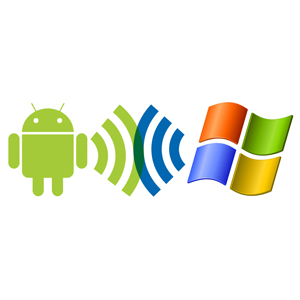
Before beginning the proper operations there should be applied some pre requisites. You have the same explained and detailed during the next list of tasks, so take your time and read the preparation procedures. Then, you can safely take care of the installation process.
- The Android SDK has some basic system requirement; before going any further check them by using the link from here.
- Also, on your computer you will have to download JDK, the Java Development Kit; use the link from here.
- Now, if you are looking forward in developing new apps for the Android OS, then, you need to download the Eclipse IDE (use the link from here) and the ADT plug-in which can be downloaded from here.
- Install Eclipse on your PC, run the same and then go to “Window -> Android SDK -> AVD Manager”. By completing this you will be able to stay up to date with all the platforms.
- Of course if you don’t want to use Android SDK for developing and testing apps, you can skip the Eclipse IDE section.
How to Install Android SDK / ADB on Windows
- In order to get used with the Android SDK, first it is recommended to download the little edition; don’t worry you can anytime get the one suitable with the advance users.
- So, download the starter package from here and save the file on the desktop.
- Extract the file and place it to the root of the C driver. You should get something like “C:\ android-sdk-windows”.
- Go to the mentioned folder (C:\ android-sdk-windows) and open SDK manager.
- From there select “Android SDK Platform-tools, revision 6” along with anything else you want and start the installation procedure.
- Then, go to path “Available Packages -> Third party Add-ons -> Google Inc. add-ons -> check Google USB Driver package, revision 4? and install this too.
- You can close the manager now.
- Up next, on your computer click on “Start / Windows button -> Control Panel -> System proprieties”.
- Choose “Advance System settings” followed by “Environment Variables”.
- Now we will set down the variables; in order to do so, scroll down until you see “Path” – click on the same.
- Into the Value field, on the end of the line add the following “;C:\android-sdk-windows\platform-tools;C:\android-sdk-windows\tools”.
- Click “OK” and exit.
- Now, take your Android based device and enable the USB debugging option on it: “Settings-> Applications-> Development”.
- Connect your handset with the computer by using its USB cable.
- Install the proper drivers for your phone / tablet.
- Open command prompt on your computer (“Start -> run -> cmd”).
- On the cmd window type “adb devices”.
- Your device should now be listed in cmd meaning that you are done.
- Right click on the “My computer” icon and then open the Device manager.
- A yellow exclamation mark should be near the Unknown Device group.
- Right click on ADB and select “Update Driver Software -> Browse -> Let me pick”.
- Click on “Have disk -> browse”.
- Head to path “C:\android-sdk-windows\extras\google\usb_driver and choose android_winusb.inf.” and click on the Android ADB Interface.
- Ignore the warnings if such is displayed.
- When the installation procedure is over, re-open the cmd on your computer, type “adb devices” once more; this time everything should be working as expected.
Note: If this tutorial worked for you (and it should work), please leave a comment below. Thanks.





0 comments:
Post a Comment